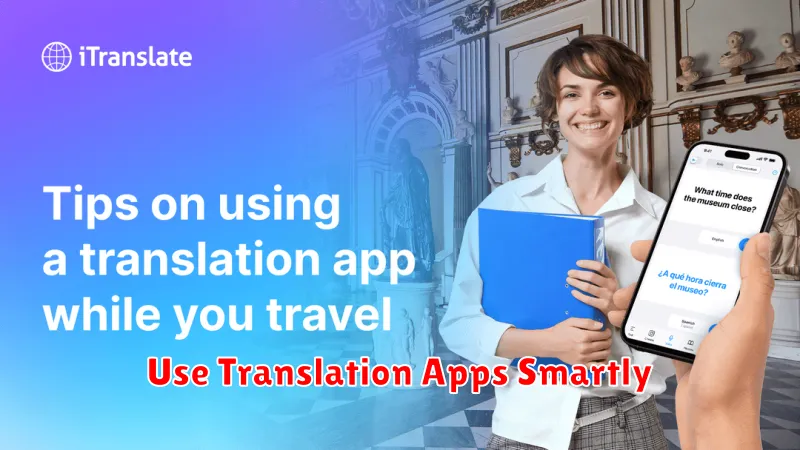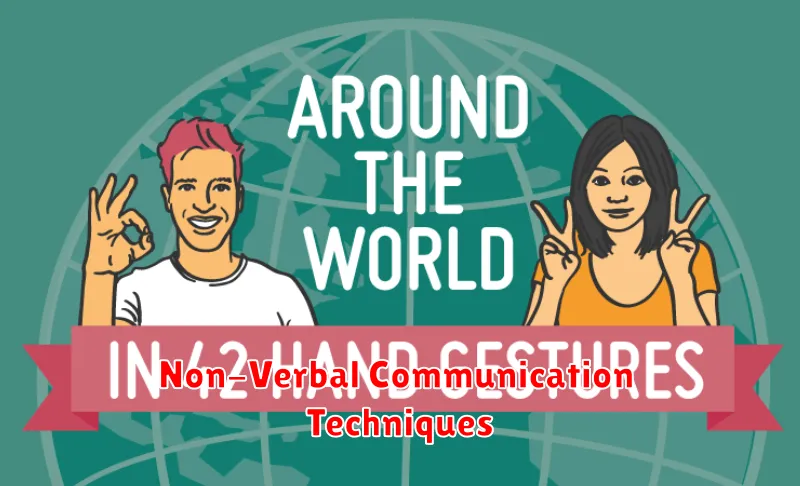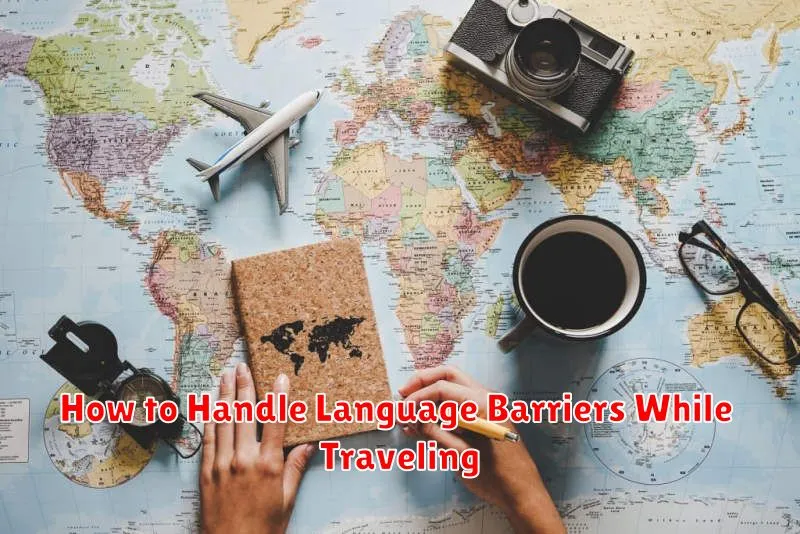Traveling to new and exciting destinations can be an enriching experience, but language barriers can sometimes present a challenge. Successfully navigating communication difficulties is essential for a smooth and enjoyable trip. This article will provide practical tips and strategies on how to handle language barriers while traveling, enabling you to connect with locals, experience the culture more authentically, and ultimately enhance your travel adventures. Whether you are planning a trip abroad or exploring a multilingual region within your own country, understanding how to overcome language differences is crucial.
Overcoming language barriers doesn’t necessarily require fluency in the local language. There are numerous tools and techniques you can utilize to bridge the communication gap effectively. From learning basic phrases and utilizing translation apps to employing non-verbal communication strategies, this article will explore diverse methods for handling language barriers while traveling. Discover how to ask for directions, order food, seek assistance, and engage in meaningful interactions even when you don’t share a common language with those around you. By implementing the advice presented here, you’ll be well-equipped to navigate linguistic challenges and embrace the full potential of your travels.
Why Language Barriers Happen Frequently
Language barriers arise frequently in travel due to the diversity of languages spoken globally. With thousands of distinct languages and dialects across the world, it’s statistically improbable for travelers to be fluent in every language they encounter in their journeys.
Geographic distance plays a significant role. Different regions cultivate distinct linguistic traditions, often with limited mutual intelligibility even between neighboring areas. This reality creates challenges for communication when individuals from different linguistic backgrounds interact.
Furthermore, limited exposure to foreign languages can contribute to the frequency of language barriers. Even with widespread access to language learning resources, many individuals prioritize their native language, leading to difficulties understanding and being understood in unfamiliar linguistic settings.
The dominance of certain languages in global commerce and media can also exacerbate the issue. While a few languages enjoy international prominence, many languages remain less commonly understood, furthering the potential for communication breakdowns during travel.
Learn Basic Local Phrases in Advance
One of the most effective ways to mitigate language barriers is to learn basic local phrases before your trip. Even a small vocabulary can make a significant difference in your interactions and overall experience.
Focus on essential greetings like “hello,” “goodbye,” “please,” and “thank you.” Learning how to ask for directions, order food, and handle simple transactions is also highly recommended. These phrases can help you navigate everyday situations with greater ease and confidence.
Consider utilizing language-learning apps, online resources, or phrasebooks to acquire these basic skills. Practicing pronunciation beforehand will boost your comprehension and make it easier for locals to understand you.
While fluency isn’t expected, demonstrating a willingness to learn the local language is often appreciated and can lead to more positive interactions. It shows respect for the local culture and can enhance your travel experience significantly.
Use Translation Apps Smartly

Translation apps are invaluable tools for travelers navigating foreign languages. They can bridge communication gaps in a variety of situations, from ordering food to asking for directions. Download a reputable translation app before your trip and download the necessary language packs for offline use. This is crucial for areas with limited or no internet connectivity.
While these apps are incredibly useful, remember they aren’t perfect. Double-check translations, especially for complex sentences or important information. Nuances and idioms can be easily mistranslated, leading to misunderstandings. Use simple, clear language when inputting text for translation to increase accuracy.
Learn basic phrases in the local language. While translation apps are helpful, demonstrating a willingness to learn the local language goes a long way. Simple greetings like “hello” and “thank you” can enhance interactions and show respect for the local culture. Supplementing app use with even a few basic phrases demonstrates effort and builds rapport.
Consider using the app’s conversation feature or voice input/output capabilities for more complex interactions. These features can facilitate real-time communication, although it’s still important to be mindful of potential inaccuracies. Always verify crucial information through alternative methods if possible.
Non-Verbal Communication Techniques

When verbal communication is impossible due to language differences, non-verbal cues become crucial. These techniques can help bridge the communication gap and facilitate understanding.
Body language plays a significant role. Maintaining eye contact demonstrates engagement and respect, though be mindful of cultural variations. Using hand gestures can help clarify your needs. Simple gestures like pointing, miming actions, or using your hands to indicate size or quantity can be surprisingly effective.
Facial expressions are universally understood. A smile conveys friendliness, while a furrowed brow indicates confusion or concern. Use your expressions to reinforce your intended message.
Be mindful of personal space. Respect cultural norms regarding proximity and avoid touching unless appropriate. Observe how locals interact to gauge acceptable distances.
Finally, be patient and observant. Non-verbal communication requires both parties to be attentive and receptive to subtle cues. By combining these techniques and being mindful of cultural sensitivities, you can effectively navigate communication challenges while traveling.
Bring Printed Key Info in Local Language
Even with translation apps, having key information printed in the local language can be invaluable, especially in areas with limited internet access. This includes your hotel address, important medical information, allergy details, and basic phrases.
Consider creating a small card with phrases like “I need a doctor,” “I’m allergic to…”, or “I need help.” This can be shown to locals if you struggle to communicate verbally.
Pre-translate essential information. This includes your passport details, flight information, and emergency contact numbers. Having this readily available can save valuable time and minimize stress in critical situations.
Be Patient and Use Visual Cues
When navigating language barriers, patience is paramount. Understand that communication difficulties are a natural part of traveling to a foreign country. Frustration can escalate situations, whereas a calm demeanor facilitates understanding.
Visual cues can significantly bridge communication gaps. Pointing, gesturing, and using facial expressions can convey basic needs and intentions. For example, mimicking eating gestures can indicate hunger, while pointing at a map can help with directions. Drawing simple pictures can also be helpful.
Carrying a phrasebook or using a translation app can assist with key phrases. Even a few basic words in the local language can show respect and be incredibly helpful.
Seek Help from Hotel Staff or Locals
Hotel staff are often multilingual and accustomed to assisting guests with language barriers. Don’t hesitate to approach the front desk or concierge for help with translations, directions, or making local calls. They can be an invaluable resource for navigating unfamiliar situations.
If you venture beyond the hotel, remember that many locals are willing to assist tourists. While it’s important to be mindful of cultural norms and avoid interrupting someone’s day, a polite gesture and a simple phrase in the local language can go a long way. Even if they don’t speak your language, they might be able to point you in the right direction or find someone who can help.
When asking for assistance, speak slowly and clearly. Keep your sentences short and to the point, focusing on key words. Nonverbal communication, such as pointing or gesturing, can also be helpful in conveying your message.

